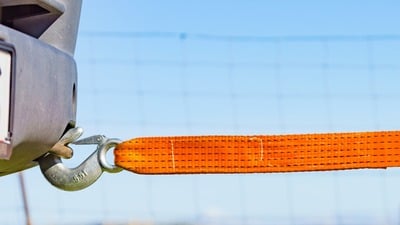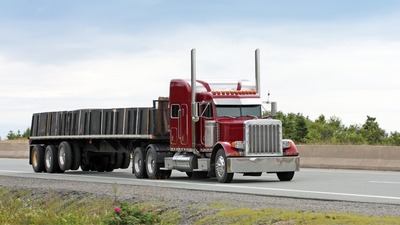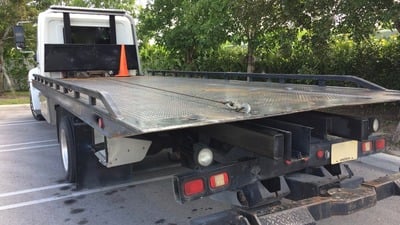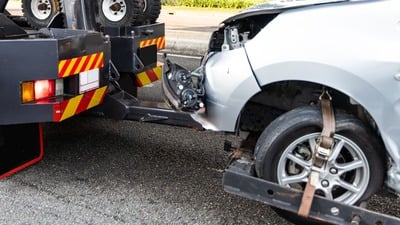Introduction to Flatbed Tie Downs: Importance and Uses
When you're hauling cargo, keeping it secure is not just important, it's the law. That's where flatbed tie downs come in. These are the heroes keeping loads in place on open trailers, making sure everything from lumber to steel beams reaches its destination safely. Why does this matter? For starters, poorly secured cargo is a danger to everyone on the road. Imagine driving behind a flatbed when suddenly, a load shifts or worse, falls off. Not a pretty picture, right? That's why using flatbed tie downs correctly is crucial. Flatbed tie downs come in various forms - chains, straps, and winches are just the start. They're used based on the cargo's weight, type, and transportation distance. It’s not a one-size-fits-all deal. Got a load of bricks? You’ll probably use heavy-duty chains. Transporting delicate machinery? Straps with padding might be your go-to. Remember, securing cargo properly is not just about safety; it's about efficiency and avoiding damage to your precious cargo. Plus, it keeps you on the right side of the law. In summary, understanding the importance and uses of flatbed tie downs is the first step in ensuring your haul is secure, safe, and within legal bounds.
Selecting the Right Type of Flatbed Tie Downs for Your Load
Selecting the right type of flatbed tie downs is crucial for the safety of your load and everyone on the road. First, consider what you're hauling. Lightweight cargo might get by with polyester straps, which are strong but gentle on delicate loads. Heavy or sharp objects? Steel chains are your best bet. They're tough but watch out; they can damage what you're tying down. If you're hauling a variety of items, ratchet straps offer a good mix of strength and versatility, making them a favorite for many drivers. Remember, the goal is to match the tie down to the job. Don’t go overboard with steel chains on something that needs a softer touch, and don’t rely on straps if the load demands the strength of chains. Your choice affects not just the safety of your cargo but everyone’s safety. Pick wisely.
Regular Inspection: The Key to Safe Flatbed Operation
Regular checking of your flatbed tie downs isn't just important—it's essential for safety. Imagine driving down the highway and suddenly, your load shifts. Scary, right? That's why inspecting your tie downs before every use is crucial. Look for signs of wear like cuts, frays, or broken stitching. Even rust on metal components can weaken them over time. If you spot any damage, replace the tie down immediately. It's not about spending a bit extra now; it's about preventing accidents and ensuring everything stays secure. Remember, safety first. A few minutes spent inspecting can save lives and keep your flatbed operation running smoothly.
How to Properly Maintain Your Flatbed Tie Downs
Caring for your flatbed tie downs is not rocket science, but it requires regular attention. First things first, always check for wear and tear. Look for cuts, frays, or any signs of weakness in the straps. If you spot damage, replace the tie down immediately. It’s better to be safe than sorry. Next, cleanliness is key. Dirt and grime can hide damage and erode the material over time. So, after each use, give your tie downs a good clean with mild soap and water. Make sure they're completely dry before storing to prevent mildew and corrosion. Speaking of storage, sunlight is not a friend to your tie downs. UV rays can weaken the straps over time. Store them in a cool, dry place away from direct sunlight. Also, don’t just throw them in a pile. Hang them up or neatly coil them. This prevents kinks and tangles, making your life easier when you next need them. Lubricate the ratchet mechanism regularly with a silicone-based spray. This keeps it functioning smoothly and extends its life. Lastly, make it a habit to inspect your tie downs before every use. It only takes a minute but can prevent accidents and ensure your load is secure. Regular maintenance is not a hassle; it’s a necessity that keeps you and your cargo safe on the road.
Step by Step Guide to Inspecting Your Flatbed Tie Downs
Inspecting your flatbed tie downs is straightforward, but crucial for safety. Let's break it down into simple steps. First, check for wear and tear. Look at the straps and chains for any signs of damage like cuts, frays, or rust. This step is vital because even minor damage can lead to failures. Next, examine the hardware. This includes ratchets, hooks, and buckles. They should all operate smoothly and be free from rust or deformation. Then, test the tension. After securing a load, the tie downs should be tight and secure, with no slack. If they're loose, they're not safe. Also, look at the anchor points on your flatbed. These points must be solid, without cracks or bending, to hold your load securely. Lastly, review your setup. Make sure your tie downs are arranged properly, avoiding sharp edges or angles that could cause wear during transport. This step-by-step guide ensures your tie downs are in top condition, keeping your load secure and the roads safe.
Common Wear and Tear: What to Look For
When inspecting your flatbed tie downs, keep an eye out for signs of wear and tear. These signs include fraying on the straps, rust or corrosion on the ratchets and hooks, and stretched or bent parts that don't look like they did when new. If the tie down doesn't lock securely or releases unexpectedly, that's a red flag. Also, check for abrasions or cuts on the straps, especially where they make contact with sharp edges of the load. Remember, even small damage can greatly reduce the strength of your tie downs. It's simple: if your tie downs show any of these issues, replacing them is way better than risking a load failure on the road. Safe hauling starts with gear you can trust, so don't skimp on inspections.
Repair or Replace? Making the Right Decision for Damaged Tie Downs
When it comes to damaged tie downs, you must make a quick but smart decision: repair or replace? This decision can mean the difference between safety and risk on the road. Here's a simple guide to help you decide. If you see any frayed, worn-out straps or rusted and bent hardware, think replace, not repair. These are clear signs your tie downs are past their prime. However, minor abrasions or superficial rust could be fixed, but always consult a professional first. Remember, your priority is securing the load safely. If you're ever in doubt, lean towards replacement. It's better to invest in new tie downs than to risk a catastrophe.
Best Practices for Storing Your Flatbed Tie Downs
Storing your flatbed tie downs the right way means they'll last longer, saving you money and hassle. First up, always clean them after use. Dirt and moisture aren't friends with your tie downs, leading to rust and wear. Dry them out before storing to avoid mold and corrosion. Roll them neatly, or hang them if possible, to prevent tangles and wear on the straps. For metal parts like chains or ratchets, a light coat of lubricant wards off rust. Find a cool, dry place away from direct sunlight. UV rays can weaken the straps over time. Lastly, keep them in a bag or a box to protect against dirt and damage. This little effort keeps your tie downs ready and reliable for when you need them next.
Safety Tips and Regulations to Follow When Using Flatbed Tie Downs
When it comes to flatbed tie downs, safety is not a suggestion; it's a must. That's why there are specific rules and regulations you've got to follow. First, always check that the tie downs are in good condition. Look for signs of wear and tear like cuts, frays, or rust on metal parts. Never use a tie down that looks damaged. Second, use the right tie down for the job. Not all tie downs are created equal, and using the wrong type can lead to a disaster. Make sure you're matching the strength and type of tie down to the load you're securing. Third, keep an eye on the load limit. Every tie down has a weight limit, known as the Working Load Limit (WLL). Going over this limit can cause the tie down to fail. Always follow the rule of thumb: the combined WLL of all tie downs should be at least half the weight of the load. Lastly, regular inspections are crucial. Before you hit the road, double-check your tie downs. And it doesn't stop there. During stops, give them a quick once-over to ensure everything is holding up. Remember, staying safe on the road starts with taking tie down safety seriously.
Summary: Ensuring Longevity and Safety of Your Flatbed Tie Downs
Ensuring the longevity and safety of your flatbed tie downs comes down to two key practices: regular maintenance and inspection. Without making these a habit, you're playing a risky game with your cargo and safety of those around you. First off, always check your tie downs for signs of wear, tear, and damage before and after use. Look out for frayed edges, cuts, or any deformation in hardware. This isn't just about safety; it's also about keeping costs down in the long run by catching issues early. Next, clean them properly after use, especially if they've been exposed to harsh conditions. Dirt, grime, and moisture aren't just annoyances; they can speed up the deterioration process of your tie downs. Routine maintenance such as lubricating the ratchets can keep them functioning smoothly. Seek out any manufacturer's guidelines for care and follow them to the letter. Remember, a well-maintained tie down is a reliable tie down. Lastly, don't push your tie downs beyond their load limit. It's tempting to do so, but overloading can weaken them over time, setting you up for potential disaster. Adhering to these practices ensures your tie downs remain dependable, prolongs their lifespan, and most importantly, keeps the road safer for everyone.





